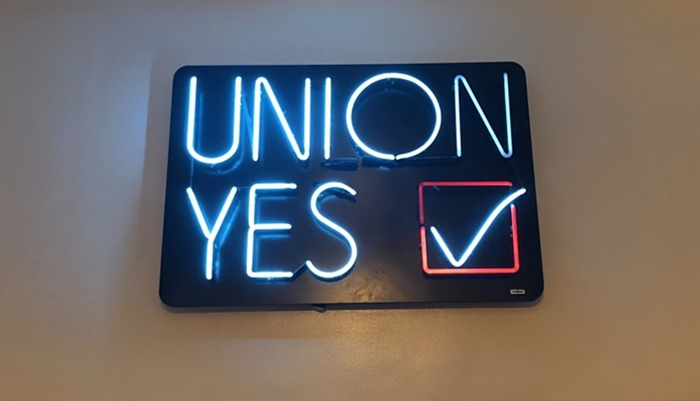Judge Roger Rogoff begins his day with a big cup of Starbucks coffee. On a recent Thursday, the first defendant on his docket is the only white juvenile he'll see in his courtroom that day. He is also the only kid represented by a private attorney.
By bringing pot to school, the juvenile violated the probation put in place after he pleaded guilty to two counts of sexually motivated assault in the fourth degree. The new offense could jeopardize the resolution in his other pending case. He recites a prepared speech on how he recognizes the consequences of his actions and is committed to community service.
His statement convinces the court to allow him to finish his sentence without time in detention, but the next case in front of Rogoff proves more complex. A 12-year-old girl stares down the possibility of lockup in Juvenile Rehabilitation Administration (JRA) at Echo Glen, a secure, state-run institution in Snoqualmie.
Her most serious charge: assault in the third degree for fracturing a social worker's elbow. After experiencing trauma in a Child Protective Services placement when she was 11, Melanie (not her real name) began running away from other homes. The Washington State Department of Social and Health Services finally found Melanie a placement more than a thousand miles away in another state—but at the airport, Melanie refused to leave. On the way back from the airport, Melanie tried to escape. It was during that escape attempt that she allegedly kicked at the social worker.
Rogoff previously handed Melanie a deferred disposition, a legal procedure used to dismiss a case if the accused meets certain conditions set by the court. But under community supervision, Melanie ran again.
The prosecutor in the courtroom, who is pushing for time at JRA, acknowledges the system fails Melanie if it doesn't provide her with the tools needed—like treatment for the trauma she has endured—to succeed in the community. Melanie's public defender argues that she needs to stay in the community, that she wants to attend a local middle school. "If the system is broken, then why are we going to penalize [Melanie] for the system being broken?" the attorney asks.
Rogoff sentences Melanie to a term at Echo Glen until the beginning of the next school year. To Rogoff, the rest of Melanie's options, like staying at short-term shelters, had run out and wouldn't keep her safe. Echo Glen would offer services and, most importantly, stability, Rogoff says—not just drug and alcohol counseling, but also school, potential job training, and athletics. He says he wants her to succeed.
When I ask Rogoff why the county nominated him to spend the day with a reporter who asked to shadow a juvenile judge, he shrugs. "Because I was the only one here?"
That may be true, but it's also true that Rogoff, a former King County prosecutor, is relatively young (48), has been on the job in juvenile court for just 18 months (after serving as a judge in King County Superior Court for three years), and gives off a "cool dad" vibe that contradicts the dour institutional setting of the King County Juvenile Detention Center where he works.
Rogoff also freely acknowledges that the juvenile justice system has "historically been a negative thing for a lot of people." He is, indeed, a dad. And he thinks a lot about the concept of white saviorhood and his own social baggage that he brings to the bench every morning.
But Rogoff still grapples with a narrow set of options for the kids who end up in his courtroom. Their futures rely on two flawed systems: a lack of housing and services for youth in the community and the consequences of detention, which may come with a high rate of recidivism, adult incarceration, and a lower rate of high school completion.
Cases like Melanie's keep Rogoff awake at night. He also goes home every weekend, he says, with a list of names in his head he hopes he doesn't see or hear about the following week.
"I think we need to engage kids who need it earlier, before they get in the system," he says. "And it's a really hard thing to do, because you don't want to target kids, you don't want to label kids really early on. On the other hand, you want to connect kids to services before they're here."
Services for kids caught up in the foster-care system—and especially juvenile offenders caught up in the foster-care system—are limited. In late 2016, InvestigateWest revealed that the number of foster parents in Washington State has plummeted, and temporary hotel stays organized by the state for kids awaiting shelter and a foster family have skyrocketed. King County played host to most of those stays. In one month alone, Washington foster kids as young as 2 were placed in hotels 211 times. Sexual abuse and parental drug addiction are some of the most common causes for kids entering the system in the first place, and high turnover and low salaries for social workers contribute to the crisis.
King County has started taking steps to address the funding gap for kids in early childhood. Voters recently passed Best Starts for Kids, a six-year, $400 property tax levy that will dedicate 50 percent of its funds to supporting new mothers and children under 5. Much of the first year's revenue will go toward the county's youth and family homelessness prevention initiative, and 10 percent of the funding will go to increasing access to affordable housing, healthy food, and economic opportunity in underserved communities.
But front-end services can't be the whole solution. Some kids will still wind up in the criminal justice system.
King County's era of juvenile detention reform began in 1999, when the county became an official Juvenile Detention Alternatives Initiative site. In a 2015 annual report on the King County Superior Court system, Judge Susan Craighead praised the county's efforts in creating alternatives to secure detention, a two-tier warrant system that can defer detention, and a Family Intervention and Restorative Services (FIRS) model that allows youth and families to bypass the court system for some domestic-violence offenses and get access to services.
Still, progress moves slowly. And while the number of referrals into the juvenile court system has dropped, white kids have been the ones to benefit the most from that shift. The number of kids in detention has been shrinking, but the disproportionality of black and brown youth in the system has grown.
Kids without any criminal history are still booked into detention, too. Charges like prostitution, prostitution loitering, drug possession, drug delivery, "intent to distribute" drugs, possession of a stolen car, and attempts to steal a car are still listed as mandatory detainable offenses for juveniles in King County, even though many of these crimes reflect bigger social problems like poverty and racial disproportionality in policing. For example, in 2014, 90 percent of the youth booked on possession of a stolen car were kids of color, and only 10 percent were white.
Current King County juvenile intake criteria also mandate that a youth arrested for any offense must be booked into detention if they have another pending charge, including nonviolent ones. If a kid gets scooped up twice for shoplifting while the first charge is still pending, that kid could end up in detention. Judges and prosecutors have begun to address this by trying to have a judge quickly review the need for detention within 45 minutes of a booking—and judges carry around iPads when they're on call for this purpose—but public defenders have submitted a proposal to change this aspect of the juvenile justice system.
In the day spent with Rogoff, it's clear that activism against the new youth jail, part of a larger facility called the "Children and Family Justice Center," isn't his primary concern.
"I think [activists] should be heard and respected, and that we should find ways to work together when we can," the judge says. "And I think we should be working toward zero youth detention. There's no reason that shouldn't be the goal."
Rogoff, citing the current King County Juvenile Detention Center's busted water fountains and oppressive design, does think there needs to be a new building. Nevertheless, his day will end at an event cohosted by one of the most prominent No Youth Jail activists in Seattle, mayoral candidate Nikkita Oliver.
At the event, an exhibit put on by court-involved youth in the Creative Justice diversion program headed by Oliver, roles are reversed: Rogoff and other attendees, many of them public defenders, are greeted at the entrance of the exhibit by kids who tie strings around their wrists. In order to free themselves, the kids explain, the adults have to do the work: They must find a piece of art in the room and talk to the artist about why it spoke to them.
More youth detention stories:
1. The Great Youth Detention Debate
2. What Will It Take to Stop Locking Up Kids?
3. Judge Roger Rogoff Has the Power to Change a Kid's Life. But Does He Have the Tools?
Read next: 4. Family Matters: First It Was a Jail Wing, Then It Became a Respite Center
6. Can the New Youth Jail Render Itself Obsolete?



















